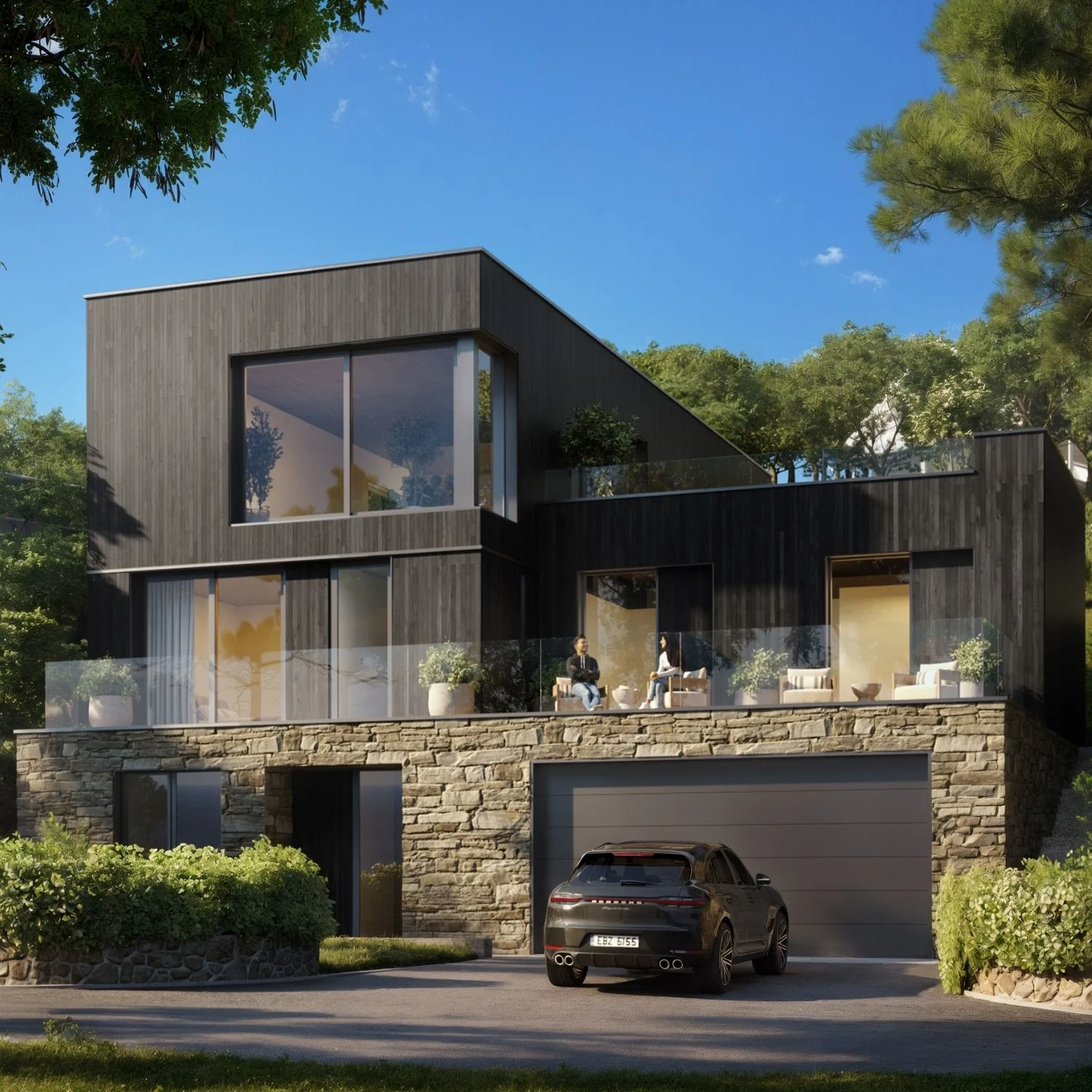AI Product Pictures vs. 3D Rendering: What Product Manufacturers Need to Know
Discover how AI product photos and 3D rendering each play unique roles in visualization.

The growing buzz around AI product photos has caught the attention of manufacturers, e-commerce teams, and creative agencies alike. As demand rises for faster, cheaper, and scalable visual content, businesses are exploring artificial intelligence as a modern solution. But can it replace the accuracy, consistency, and creative control of traditional 3D rendering?
This article breaks down the strengths and limitations of product photography AI and 3D rendering, so you’ll know exactly when to use each. When does machine intelligence help save time and budget, and when can it harm your brand? If you're a brand that values high-quality, on-brand visuals, this guide is for you.
The Rise of AI in Product Visualization
Over the past year, machine intelligence has surged in popularity. AI-powered tools generate synthetic images by using machine learning models—often trained on vast datasets of existing photos—to create new visuals. Typically, the user uploads a basic photo or provides a text prompt, and the artificial intelligence tool automatically generates lifelike images in various backgrounds, angles, or styles.
Tools like Pebblely, Flair.ai, Claid.ai, and Creatify.ai promise quick, automated visuals with minimal input. Their key appeal? Instant images are created from item photos or a simple text prompt. As product photos AI becomes more accessible, brands are asking: Is it good enough for real marketing campaigns, or just quick mockups?

How Product Photography AI Generators Work and Where They Excel
Machine learning tools leverage large datasets and neural networks to interpret your input—often a basic image—and create lifestyle visuals, mockups, or clean e-commerce. AI-powered product photos generators offer several practical advantages, especially for teams working under tight deadlines or with limited budgets.
Where Product Photos AI tools shine:
Speed: Images can be generated within seconds. Users can create AI for product photos almost instantly by uploading a photo or entering a simple text prompt—no cameras, studios, or logistics required. This allows teams to move from concept to visual content in minutes rather than days.
Affordability: Intelligent systems are also highly cost-efficient for startups, MVPs, or internal use. They eliminate the need for professional photographers, set designers, or expensive post-production work. Instead, brands can produce visually appealing content with just a few clicks—ideal when resources are limited.
Ideation & A/B Testing: Marketers can quickly produce multiple variations of a product photography with AI and test them across ads, emails, or social media to see which resonates best. This agility helps refine branding, boost engagement, and shorten feedback loops—all while keeping costs low.
Auto Enhancements: Many tools offer built-in features like automatic background removal, lighting adjustments, and image enhancement, streamlining workflows and improving visual quality with minimal effort. This makes smart systems great for generating consistent-looking content without advanced editing skills.
No Photoshoots Required: Just upload and generate. Whether you're experimenting with layouts, exploring different backgrounds, or testing seasonal themes, artificial intelligence makes it easy to generate placeholder visuals for internal reviews or presentations.
In short, AI excels at fast, flexible content creation, especially when perfect realism and brand precision aren’t critical.
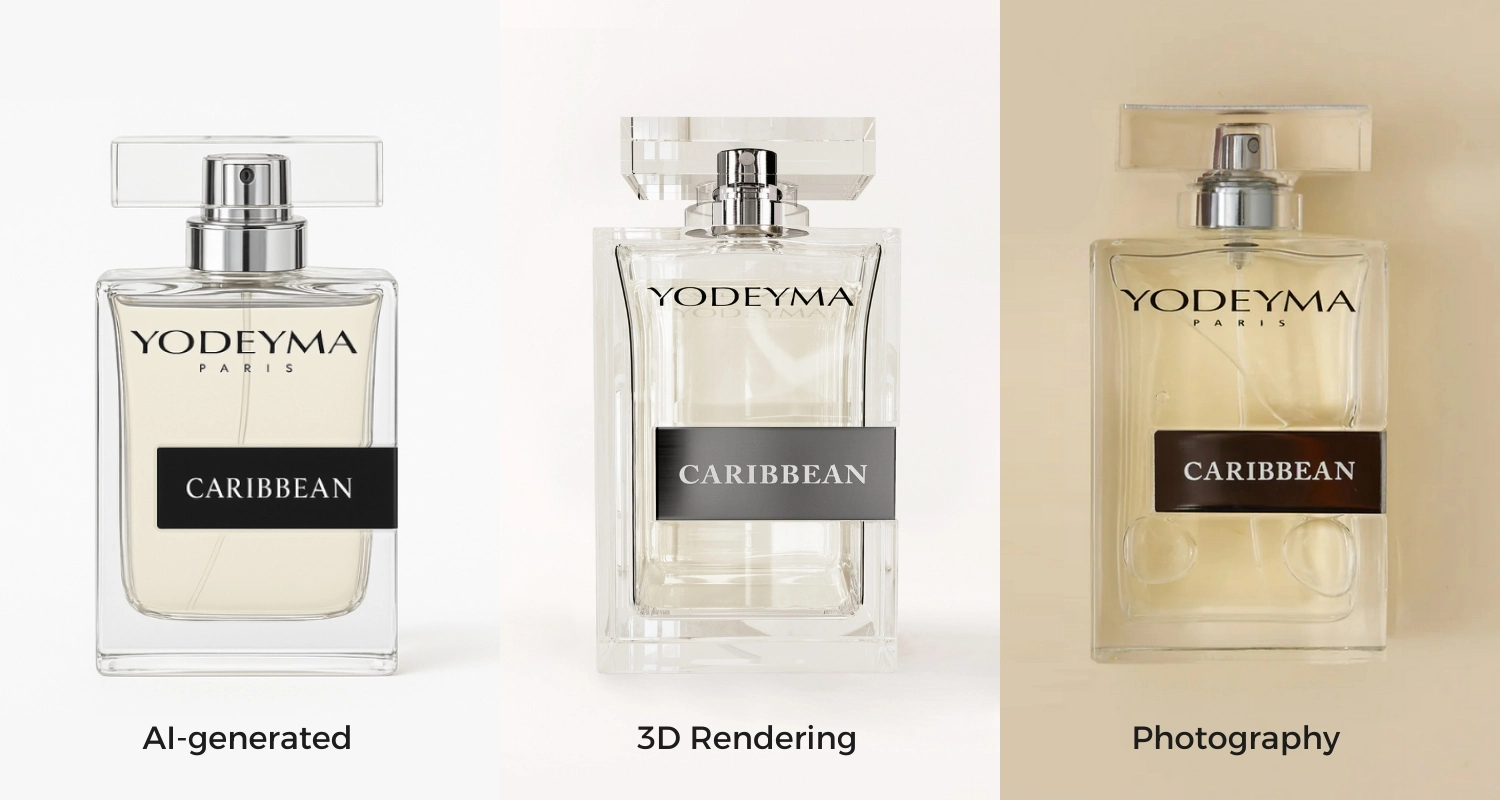
Popular Platforms Using AI Product Pictures
- Pebblely: Enhances e-commerce item photos with AI backgrounds and lighting
- Flair.ai: Drag-and-drop UI to generate scenes using AI powered product photos
- Claid.ai: Designed for marketplace scaling (Amazon, Shopify) with batch edits and image enhancement
- Creatify.ai: Focuses on videos and motion content created automatically from static photos
For small teams or rapid prototyping, using AI for product photography can be a time-saver. But for larger brands, it’s not always enough.
Where AI-Generated Product Photos Fall Short
Despite the hype, AI generated product photography has significant limitations, especially for professional manufacturers:
- Lack of Brand Control: machine intelligence often ignores brand guidelines or design systems
- Inconsistent Results: Visual style may vary drastically between outputs
- Texture & Detail Limitations: AI struggles with metallics, reflections, glass, and fine materials
- No True Camera Control: Angles and lighting are algorithm-based, not directed
- Unclear Licensing: Output rights are often vague or restricted
- Not Print-Ready: Quality often too low for high-res packaging or ad campaigns
If you need reliable, campaign-ready visuals with brand precision, product pictures AI may fall short. As they sometimes say in design, engineering, and creative work to emphasize that you can't have it all: “Fast, cheap, good—pick two.”
.webp)
The Strategic Edge of 3D Rendering for Product Brands
Unlike AI-generated images, 3D product rendering offers unmatched control, precision, and scalability, essential for professional brands.
Benefits of Choosing 3D over AI based product photography
- Full Customization: Materials, textures, lighting, and layouts are all brand-driven
- Photorealism: Accurate shadows, reflections, and depth
- Scalable Production: Easily create color variants, angle shots, 360° views
- Packaging & Print Ready: High-resolution for catalogs, billboards, or Amazon listings
- Multiplatform Usage: Reuse models for animations, configurators, AR, and more
- IP Ownership: Clear rights and commercial use without risk
For businesses seeking brand storytelling through visuals, AI powered product photos simply can't match the depth of 3D rendering.
A well-known proverb is: “Quality is remembered long after the price is forgotten.” This saying emphasizes that when something is well-made or thoughtfully crafted, its lasting impact far outweighs the initial cost. It's especially relevant when comparing high-end 3D rendering with fast, low-cost AI-generated images—quality delivers value that endures.

AI Product Photos vs. 3D Rendering: Side-by-Side Comparison
The decision between AI generated product photography and 3D rendering ultimately depends on your business needs—specifically budget, quality expectations, and use case. If you need quick, low-cost visuals for internal presentations, MVPs, or A/B testing, AI tools can deliver fast results with minimal input.
However, for launches, ad campaigns, or packaging, where visual precision and brand consistency are critical, 3D rendering is the superior choice. It offers full control over materials, lighting, and camera angles. Machine intelligence works best for speed and experimentation, while 3D delivers the detail and realism needed to make a lasting brand impression.
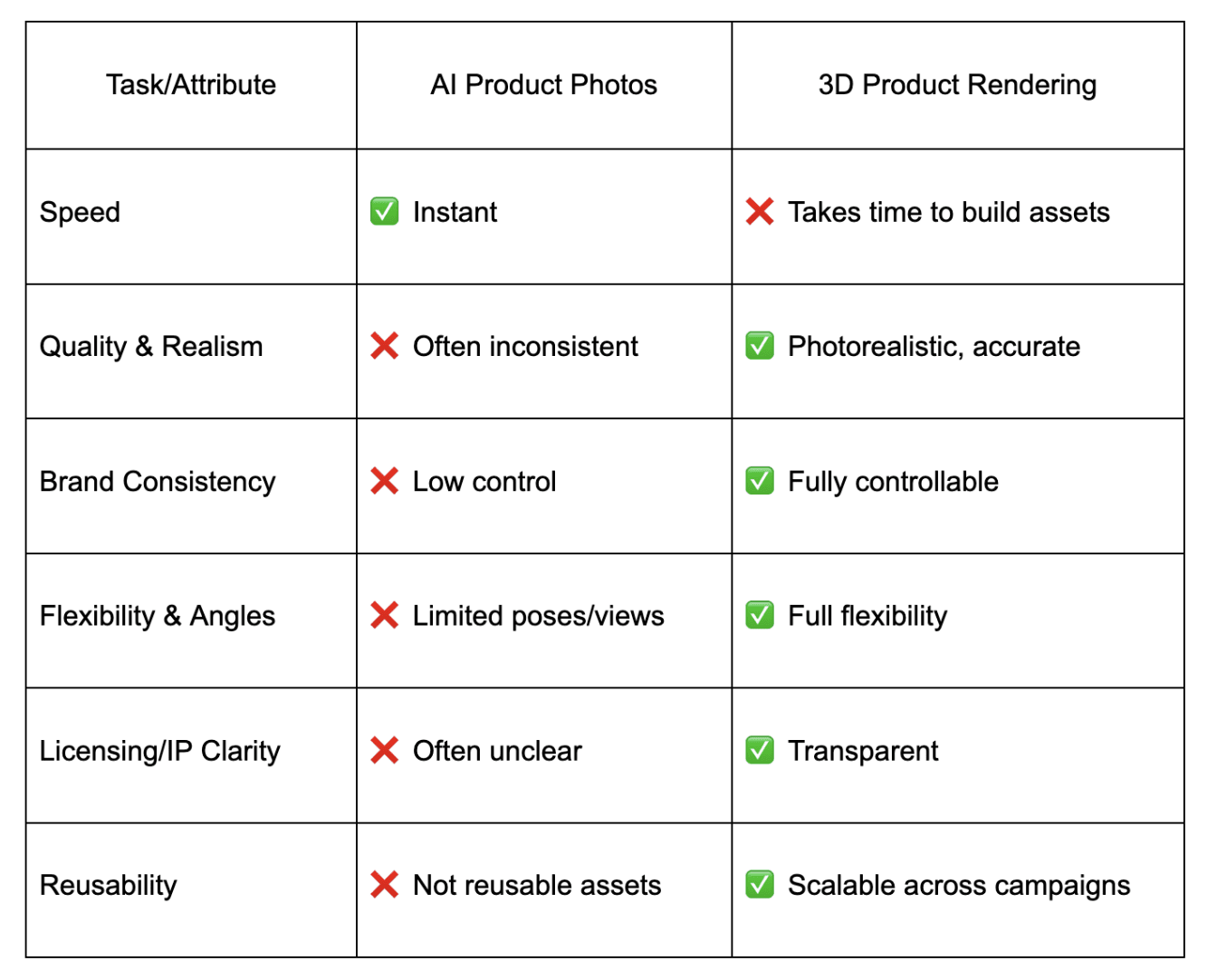
But no matter what choice you make, quality creates value. Long after trends fade or prices are forgotten, well-crafted visuals continue to build trust, elevate brands, and drive long-term results.
The Bottom Line: When to Use AI, When to Choose 3D
Use AI Generated Product Photos When:
- You're ideating or testing fast
- The budget is tight
- You only need placeholder or concept visuals
AI-generated images are a smart choice in this case.
Choose 3D Product Rendering When:
- You’re launching a product, ad campaign, or packaging
- Accuracy, realism, and brand alignment are essential
- You need reusable, flexible visual assets
Ultimately, using AI to generate product photos may save time, but it won’t replace the precision and polish of 3D. When your visuals represent your brand to the world—on packaging, e-commerce platforms, or in ad campaigns—3D rendering is the clear winner. It delivers photorealistic accuracy, full creative control, and reusable assets across multiple channels.
If your goal is long-term brand value, visual consistency, and commercial readiness, 3D rendering offers a quality standard that smart systems simply can’t match yet.
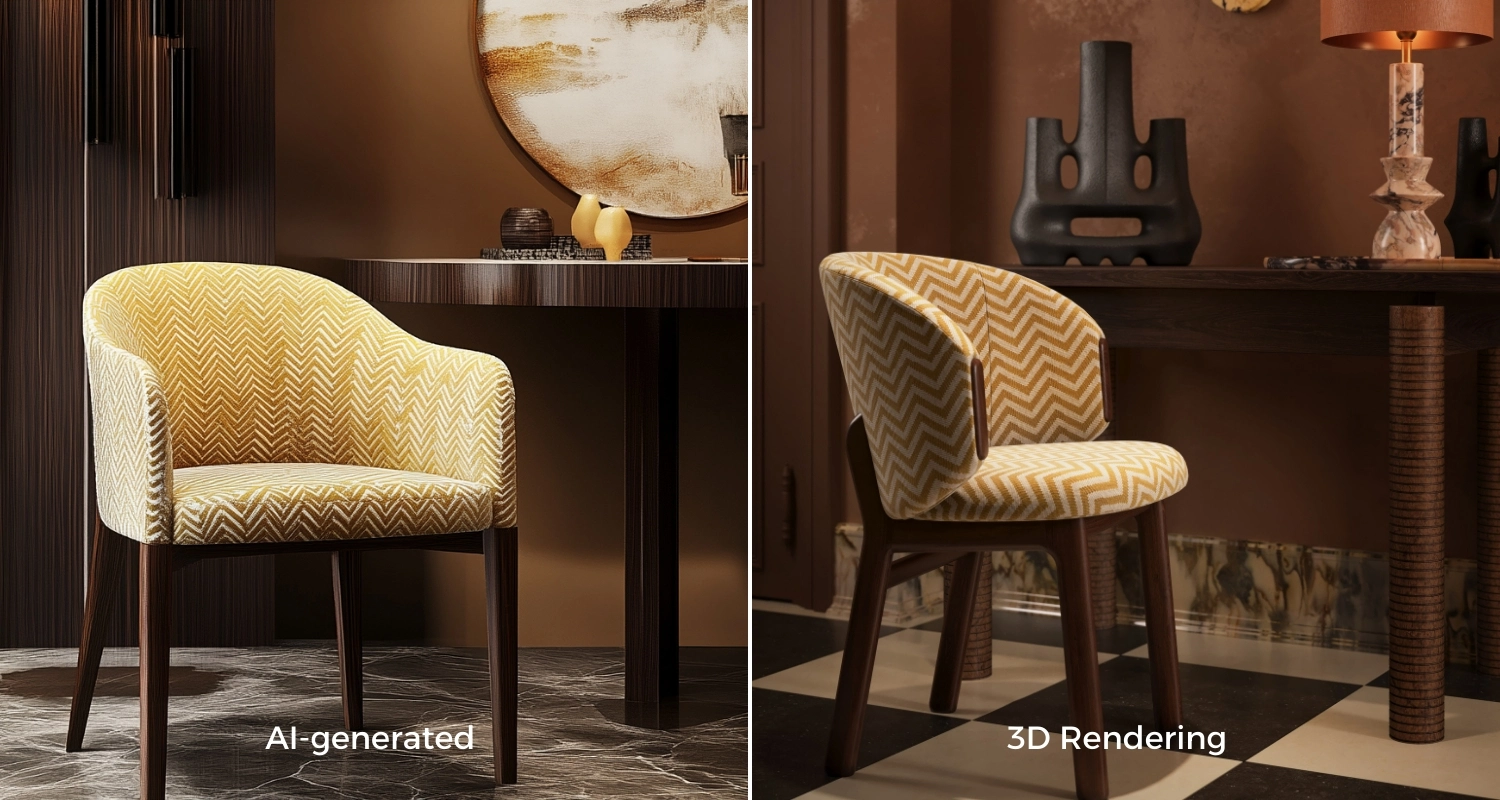
Why Choose PIXREADY for Product Visualization in the Age of AI
As AI for product photography evolves, PIXREADY offers the best of both worlds: cutting-edge tech and expert craftsmanship. Here’s what sets us apart:
- We combine AI-assisted workflows with human design precision
- Our team delivers photorealistic 3D renders custom-tailored to your product and audience
- You get transparent pricing, creative collaboration, and assets ready for packaging, Amazon, or campaign use
- We offer animation, modeling, 360° views, and AR-ready visuals all under one roof
- With our award-winning expertise, we turn your ideas into stunning, market-ready visuals that sell.
At PIXREADY, we specialize in photorealistic visualization of products, interiors, and architectural projects. If you are interested in AI-generated product photography solutions or want to optimize the production of marketing visuals, please contact us.
Here are two cases highlighting our expertise:
3D Visualization for a Perfume Brand
To help Rocket Digital scale content for their client Yodeyma, PIXREADY created a large suite of high-quality, adaptable 3D visuals. We started by producing clean white-background renders for over 100 perfume SKUs, resulting in nearly 800 tailored images for e-commerce, print, and digital campaigns. We also refreshed a smaller cosmetics line with consistent, photorealistic 3D visuals. To boost storytelling, our team crafted bold conceptual scenes that gave each fragrance a unique identity.
Result
Over 50 expressive visuals are now active across social platforms and ads. Short 3D animations further enhanced campaign performance, helping Yodeyma expand reach and visual impact.

3D Visualization for E-commerce
PIXREADY collaborated with a leading outdoor furniture brand to create realistic 3D visuals of a handcrafted, modern one-seater chair. Featuring a woven backrest and seat made of natural fibers, the chair exudes a relaxed, tropical aesthetic. Our team highlighted its unique texture, elegant wooden frame, and high-end craftsmanship through detailed renders and lifestyle scenes set by a pool. These photorealistic visuals allowed buyers to appreciate the design as if seeing it in person.
Result
A smoother launch, reduced need for traditional photography, faster time to market, and visuals that inspired customer trust and increased online conversions.
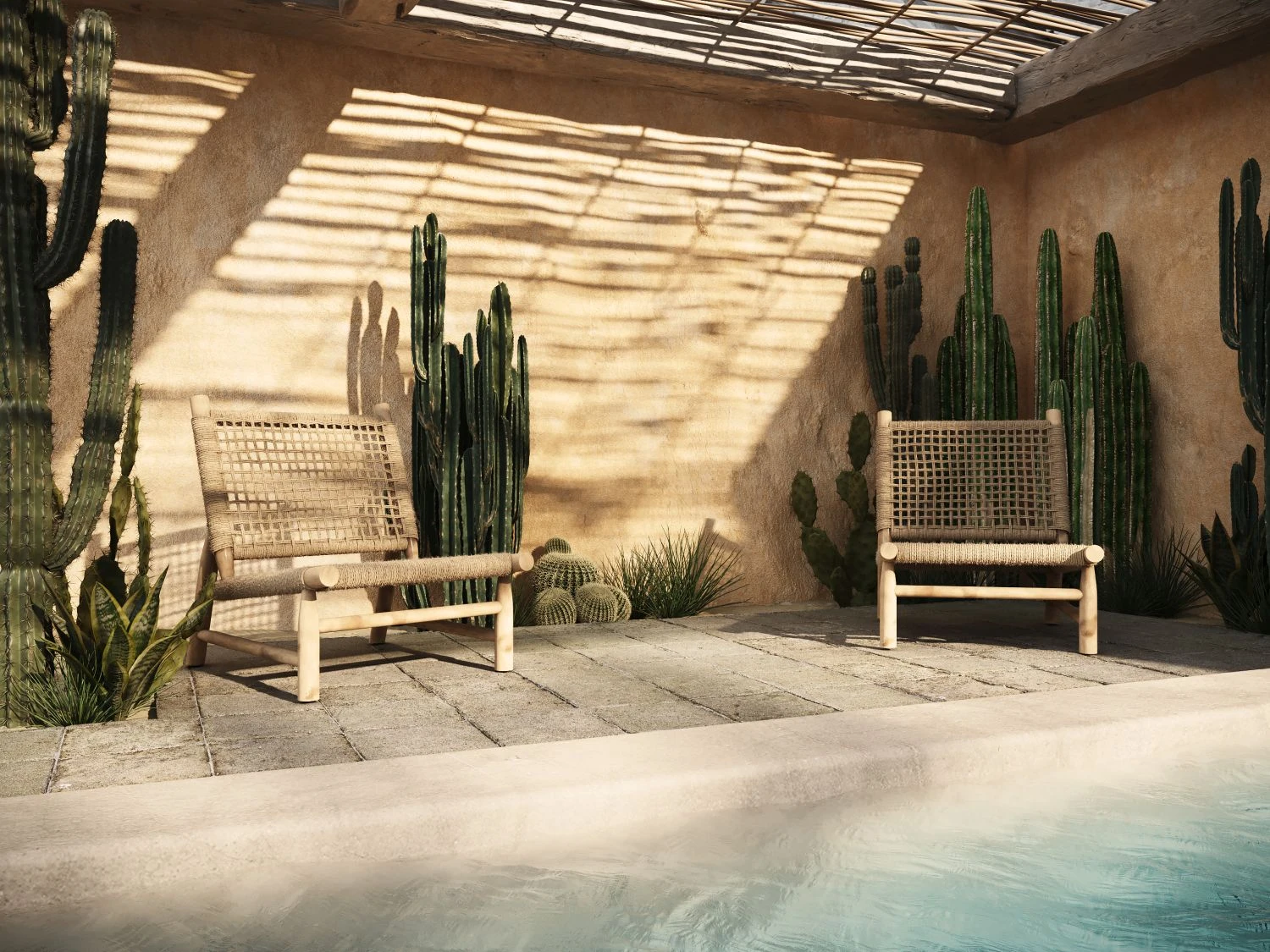
Conclusion
While AI product photos are useful for experimentation and speed, serious manufacturers still need 3D rendering for quality, consistency, and control. Artificial intelligence captures a glance, but 3D holds a gaze. At PIXREADY, we don’t just visualize —we help you tell a story that sells. We deliver quality that drives lasting value.
Ready to elevate your product visuals? Contact PIXREADY for premium, photorealistic rendering services.
.png)
Founded by a group of technology, architecture, and design professionals in 2018, PIXREADY is one of the challengers empowering the 3D visualization industry and making its products and services more affordable.We are determined to assist businesses around the world to create photorealistic images of their products and ideas and enrich the experience of their clients. We focus on the details, with the highest precision in every pixel.
Latest Posts
STAY UPDATED
Get occasional emails with 3D visualization news and insights
-2.webp)
.webp)
